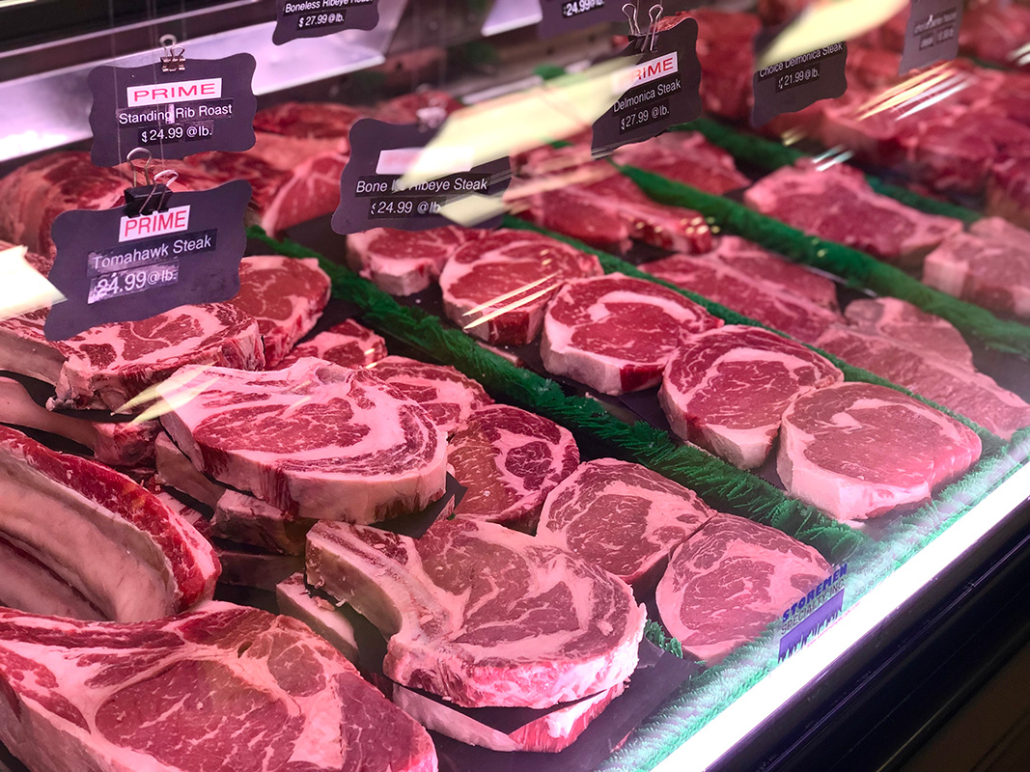Leading Factors to Patronize Bagley Farms Meat Market Edwardsville IL for Costs Meats
Leading Factors to Patronize Bagley Farms Meat Market Edwardsville IL for Costs Meats
Blog Article
Reveal the Art of the Butcher's Cut in a Modern Meat Market
In the ever-evolving landscape of modern meat markets, the butcher's cut has actually transcended its typical roots, merging olden workmanship with contemporary techniques. What genuinely establishes the modern-day butcher apart is their capability to build a much deeper connection between customers and the origins of their meat.
Advancement of Butchery Techniques
The advancement of butchery methods shows an abundant tapestry of development and adaptation driven by improvements in innovation, modifications in customer demand, and a deeper understanding of meat scientific research. Historically, butchery was a craft gave with generations, with approaches developed over centuries to make the most of yield and flavor. The industrial revolution ushered in automation, transforming typical techniques and enabling large-scale handling.
The mid-20th century saw butchery strategies better refined by clinical understandings right into muscle biology and meat aging, boosting both inflammation and taste. Developments like vacuum cleaner packaging and refrigeration extended product shelf-life, permitting butchers to diversify offerings and improve quality assurance. This period additionally noted the surge of customized equipment, such as band saws and meat slicers, which boosted accuracy and efficiency in meat processing.

Computerized systems now assist in monitoring animal provenance and maximizing cuts to satisfy specific consumer choices. In addition, a rebirth in artisanal butchery has actually emerged, blending typical abilities with modern-day knowledge to provide to consumers looking for honest and lasting meat alternatives.
Comprehending Meat Cuts
Comprehending the complexities of meat cuts is important for both butchers and customers looking for high quality and worth. For butchers, precise cuts show ability and regard for the craft, making certain marginal waste and ideal return.

Comprehending muscle structure is important; muscles made use of a lot more often by the animal often tend to be tougher and are best suited for slow food preparation techniques, while less-used muscle mass, like those found in the loin, are extra tender and suitable for grilling or roasting. Knowledge with these distinctions encourages customers to make enlightened choices, boosting their culinary endeavors.
Choosing Quality Meat
Picking the ideal meat involves even more than simply picking a visually appealing item from the display. The art of choosing top quality meat calls for a discerning eye and expertise of specific characteristics that symbolize quality and excellence.
Secondly, think about the marbling, which refers to the white streaks of fat within the muscle. Correct marbling is a key indicator of tenderness and flavor, as it thaws throughout cooking, enhancing the meat's juiciness. Keep in mind, greater marbling often associates with exceptional top quality cuts, such as USDA Prime.
Appearance is another critical element; meat must really feel solid to the touch, not slimed or extremely soft. In addition, be conscious of the aroma. Fresh meat needs to have a tidy, neutral scent, free from view it any sour or off-putting odors.
Pairing Cuts With Cooking Methods

Alternatively, harder cuts like brisket and chuck roast are abundant in collagen, which damages down right into gelatin when cooked gradually. These cuts are ideal for braising or sluggish roasting, enabling the meat to soften over time and establish deep, complex tastes. Cuts such as brief ribs and pork shoulder make out well with slow-cooking approaches, where extended cooking times transform their robust textures into succulent recipes.
Lamb shanks and oxtail, which call for long term food preparation to soften, are perfect candidates for stewing or slow simmering. These methods coax out abundant, passionate tastes while preserving wetness. By recognizing the one-of-a-kind features of each cut, cooks and home chefs alike can boost their cooking creations, making sure each dish is both pleasing and unforgettable.
The Butcher's Role Today
Browsing the progressing landscape of the modern meat market, the butcher's duty today extends beyond plain prep work of cuts. Contemporary butchers are culinary craftsmens, teachers, and supporters for lasting practices. They link the space between the ranch and the fork by making sure ethical sourcing, recognizing animal husbandry, and focusing on transparency in the supply chain. This change shows the expanding customer demand for top quality over quantity, where provenance and pet welfare are paramount.
In addition to crafting specific cuts, butchers currently engage straight with customers, using cooking advice and customizing options to fit specific needs and preferences. Their expertise in meat aging, marbling, and flavor accounts empowers customers to make informed decisions, boosting my blog their culinary experiences. This individualized solution exhibits the butcher's developing function as a relied on advisor in the click here for info kitchen area.
In addition, butchers are pivotal in reducing waste, making use of entire pets to create diverse products such as sausages and supplies. This thorough approach not only appreciates the pet yet likewise straightens with modern sustainability objectives. This way, the contemporary butcher symbolizes both practice and technology, adapting to an ever-changing market while preserving the artistry and honesty of their craft.
Verdict
Mastery in recognizing varied meat cuts and high quality indicators empowers butchers to give educated suggestions, aligning details cuts with optimal cooking approaches. By recognizing historical practices while embracing contemporary needs, the butcher's duty stays vital in today's innovative meat market.
Report this page